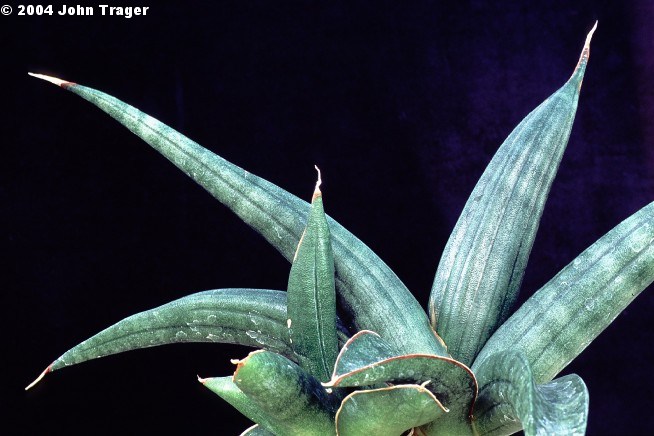This is a neotenic sansevieria. That is, it has a juvenile growth form that persists into maturity. Its compact rosettes are composed of short, arching, cylindrical, longitudinally grooved leaves. N. E. Brown described the species, thought to originate from Kenya, from a plant that flowered at Kew, April 4, 1910. On Dec 2, 1958 the US Department of Agriculture introduced it to the US as # 254414. Many of the USDA introductions of Sansevieria were planted in the naturalistic environment of the dry Koko Crater, an annex of the Foster BG in Honolulu, HI. In 1981, sansevieria collector Alice Waidhoffer of Stockton, CA, visited Koko Crater where she found S. patens (FBG 66.649). Alice was able to exchange material from her extensive and well-documented collection for plants from FBG, and S. patens began to circulate on the mainland. Ed Eby actively propagated S. patens in his nursery and shared material with Dave Grigsby who distributed it through Grigsby Cactus Gardens. Later offerings of the same plant through Glasshouse Works in Ohio were distributed as USDA #19516 in error. We offer rooted cuts of HBG 62111, a plant ex (Latin for “received from”) John Bleck when he worked at UC Santa Barbara, ex Waidhoffer. Additional material came from Virginia Martin ex Grigsby’s. Thanks to Alice’s research, we are able to conclude that this is all the same clone—and the type clone—of this choice sansevieria. $10.
According to Len Newton (Sansevieria 13:3, 2005) the origin and identity of N.E. Brown’s original S. patens remains an unsolved mystery. Therefore, Steve Jankalski (Sansevieria 15: 8-9, 2006) has coined the cultivar name S. ‘Ed Eby’ for this plant in honor of the man who rescued the surviving plant from Koko Crater Botanic Garden, Hawaii. Jankalski suggests that the plant may be a hybrid of S. canaliculata and S. pearsonii, two species employed in the USDA breeding program in Florida for developing superior fiber-plants, many of which ended up in Koko Crater. Alternatively, the plant may be an open hybrid of these two species, which are also cultivated at Koko Crater. Further research will be required to determine the possible hybrid origin of S. ‘Ed Eby’ and its parentage.

Published in the Cactus and Succulent Journal, Vol. 76 (2), March - April, 2004